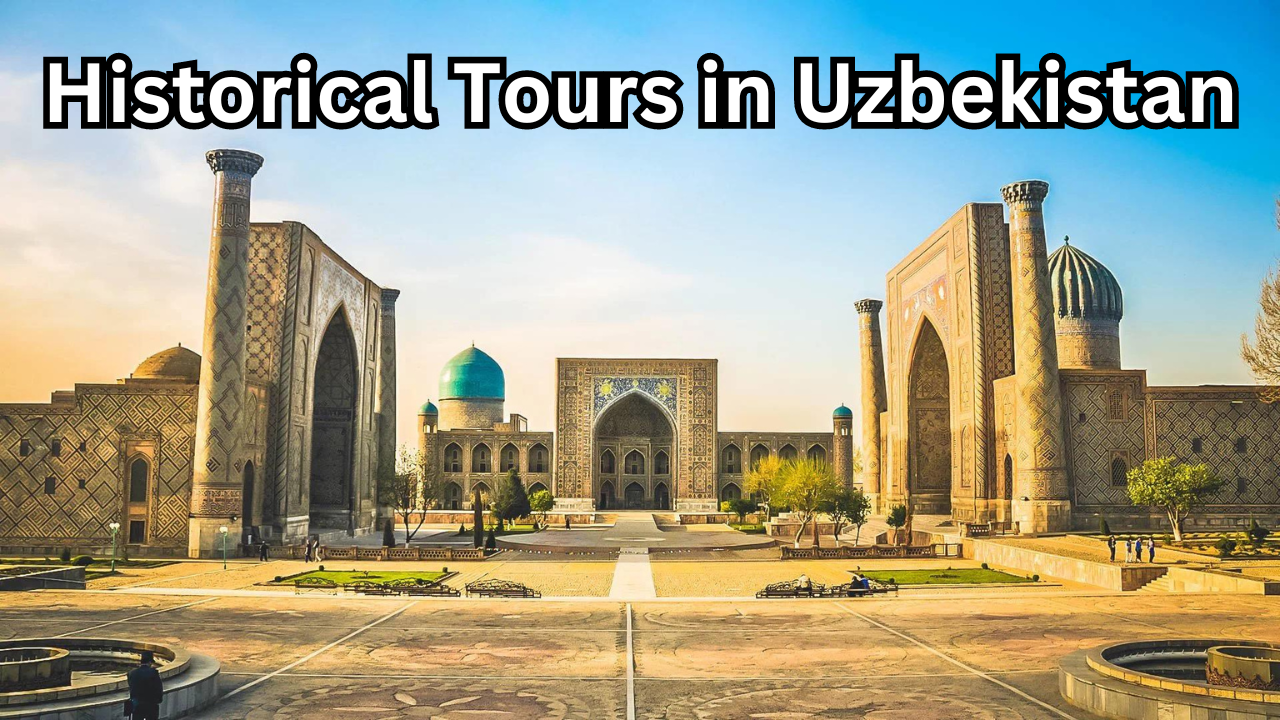Table of Contents
Introduction
Uzbekistan, nestled in the heart of Central Asia, boasts a rich tapestry of history that spans millennia. Its strategic location along the ancient Silk Road made it a crossroads of civilizations, influencing its culture, architecture, and traditions. Exploring Uzbekistan through historical tours unveils a treasure trove of heritage sites, each narrating tales of conquests, trade, art, and spirituality. From the majestic cities of Samarkand and Bukhara to the ancient wonders of Khiva and Termez, these tours offer a captivating journey back in time, allowing visitors to immerse themselves in the legacy of empires, scholars, and adventurers who shaped the region’s history. Let’s embark on a virtual exploration of the historical tours awaiting curious travelers in Uzbekistan.
Brief overview of Historical Tours in Uzbekistan:
Uzbekistan stands as a testament to the cradle of human civilization, with archaeological evidence dating back to ancient times. Its geographical position at the crossroads of East and West made it a pivotal point for trade, cultural exchange, and the flow of ideas. The region was home to illustrious empires such as the Timurid Empire, which left behind architectural marvels like the Registan Square in Samarkand. Additionally, Uzbekistan played a crucial role in the development and spread of Islam in the region, evident in the grandeur of mosques, madrasas, and mausoleums that dot its landscape. The legacy of conquerors, scholars, and artisans intertwines to form Uzbekistan’s rich historical tapestry, making it a captivating destination for history enthusiasts.
Importance of historical tours in understanding Uzbekistan’s heritage:
Historical tours serve as windows into Uzbekistan’s vibrant past, allowing visitors to delve deep into its history, culture, and traditions. These tours provide an immersive experience, offering insights into the achievements and contributions of ancient civilizations that once flourished in the region. By exploring archaeological sites, museums, and historical monuments, travelers gain a profound understanding of Uzbekistan’s heritage, from its nomadic roots to the heights of imperial glory. Moreover, engaging with local guides and experts during these tours provides valuable context and narratives, bringing history to life and fostering a deeper appreciation for the country’s cultural legacy. Overall, historical tours play a vital role in preserving and sharing Uzbekistan’s rich historical heritage with the world.
Samarkand Historical Tour
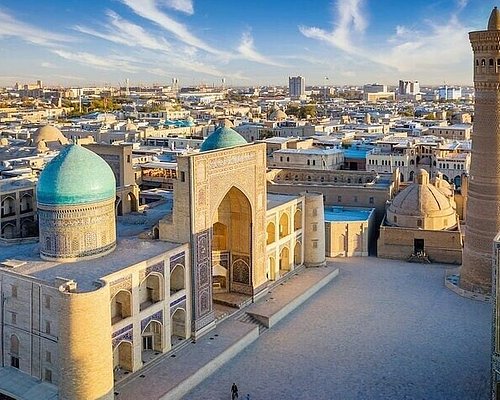
Embarking on a Samarkand Historical Tour is akin to stepping into a living museum of ancient civilizations and architectural splendor. Samarkand, often referred to as the “Pearl of the East,” is a city steeped in history, with roots stretching back over two millennia. The tour takes travelers on a mesmerizing journey through the remnants of empires, showcasing iconic landmarks like the Registan Square, adorned with intricately tiled madrasas that whisper tales of scholarly pursuits and artistic brilliance. The Bibi-Khanym Mosque stands as a testament to Timur’s grandeur, its massive portal and azure domes captivating the imagination. Wander through the narrow lanes of the Shah-i-Zinda necropolis, where turquoise-tiled mausoleums house the remains of royalty and nobility, each structure a masterpiece of Islamic architecture. A Samarkand Historical Tour is not just a sightseeing expedition but a profound encounter with the layers of history that have shaped this enchanting city into a cultural gem of Uzbekistan.
Description of Samarkand’s historical sites:
Samarkand, nestled in the heart of Uzbekistan, is a city steeped in history and renowned for its breathtaking historical sites. Its significance as a center of trade, culture, and scholarship along the ancient Silk Road is evident in the architectural marvels that dot its landscape. From grand mosques and madrasas to majestic mausoleums and citadels, Samarkand’s historical sites offer a glimpse into its illustrious past and the diverse influences that have shaped its identity over centuries.
Key attractions like Registan Square, Bibi-Khanym Mosque, Shah-i-Zinda necropolis:
- Registan Square: Arguably one of the most iconic landmarks in Samarkand, Registan Square is a vast plaza surrounded by three grand madrasas — Ulugh Beg, Tilya-Kori, and Sher-Dor. The intricate mosaic work, soaring minarets, and imposing facades make it a masterpiece of Islamic architecture and a focal point for visitors exploring the city’s historical heritage.
- Bibi-Khanym Mosque: Constructed by Timur the Great in the 15th century, the Bibi-Khanym Mosque is a testament to the empire’s architectural prowess and grandeur. Its massive turquoise dome, intricate tile work, and colossal entrance portal are awe-inspiring, reflecting the magnificence of Timurid architecture.
- Shah-i-Zinda necropolis: Nestled along the slopes of Afrosiab Hill, the Shah-i-Zinda necropolis is a sacred site housing a stunning collection of mausoleums and tombs dating back to the 9th to 14th centuries. The intricate tile work, vibrant colors, and spiritual ambiance create a mesmerizing experience as visitors wander through the labyrinthine alleys of this historical complex.
These key attractions in Samarkand are not just architectural wonders but living testaments to the city’s rich history, cultural heritage, and artistic achievements, making them must-visit destinations for anyone seeking to delve into Uzbekistan’s captivating past.
Bukhara Heritage Tour
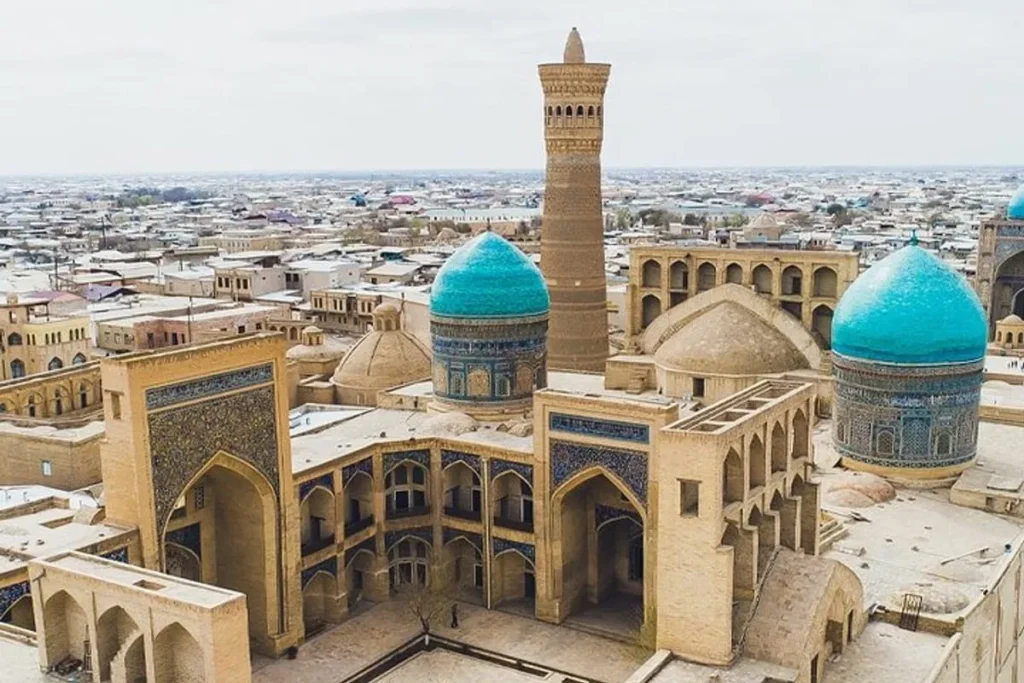
Embarking on a Bukhara Heritage Tour is a captivating journey into the heart of Uzbekistan’s cultural and historical legacy. Bukhara, often referred to as the “City of a Thousand and One Nights,” is a treasure trove of ancient monuments, bustling bazaars, and timeless traditions. The tour invites travelers to explore the city’s well-preserved historical sites, each narrating tales of bygone eras and the vibrant tapestry of civilizations that once thrived here. From the imposing walls of the Ark of Bukhara, a centuries-old fortress that witnessed the rise and fall of empires, to the intricate tile work and majestic domes of the Kalon Mosque and Mir-i-Arab Madrasa, every step in Bukhara is a step back in time. The Chor-Minor, with its distinctive four minarets, adds a touch of whimsy to the city’s architectural ensemble. A Bukhara Heritage Tour is not just a sightseeing expedition but an immersive experience, where the past seamlessly merges with the present, offering insights into Uzbekistan’s enduring cultural heritage and the spirit of resilience that defines this historic city.
Exploration of Bukhara’s historical landmarks:
Bukhara, steeped in history and tradition, invites visitors on a captivating journey through its rich tapestry of historical landmarks. Each site unfolds a chapter of Bukhara’s storied past, showcasing the city’s significance as a center of trade, religion, and scholarship along the Silk Road. Exploring Bukhara’s historical landmarks is like delving into a living museum, where ancient structures whisper tales of conquests, cultural exchanges, and artistic brilliance.
Highlights such as the Ark of Bukhara, Kalon Mosque, Chor-Minor:
- The Ark of Bukhara: This ancient fortress, dating back over a millennium, stands as a symbol of Bukhara’s resilience and strategic importance. Within its walls lie centuries of history, from royal courts and prisons to mosques and administrative buildings, offering a glimpse into the city’s political and social evolution.
- Kalon Mosque and Minaret: The grandeur of the Kalon Mosque, with its massive courtyard and towering minaret, reflects Bukhara’s architectural prowess and devotion to Islam. The intricate tile work, geometric patterns, and serene ambiance make it a spiritual and visual delight for visitors.
- Chor-Minor: A charming architectural gem, the Chor-Minor stands out with its four distinct minarets, each adorned with colorful tile work and intricate designs. This unique structure, originally a madrasa gateway, adds a whimsical touch to Bukhara’s historical skyline, symbolizing the city’s cultural diversity and artistic ingenuity.
Exploring these highlights and other historical landmarks in Bukhara offers a deeper understanding of Uzbekistan’s cultural heritage and the enduring legacy of civilizations that thrived in this ancient city.
Khiva Ancient City Tour
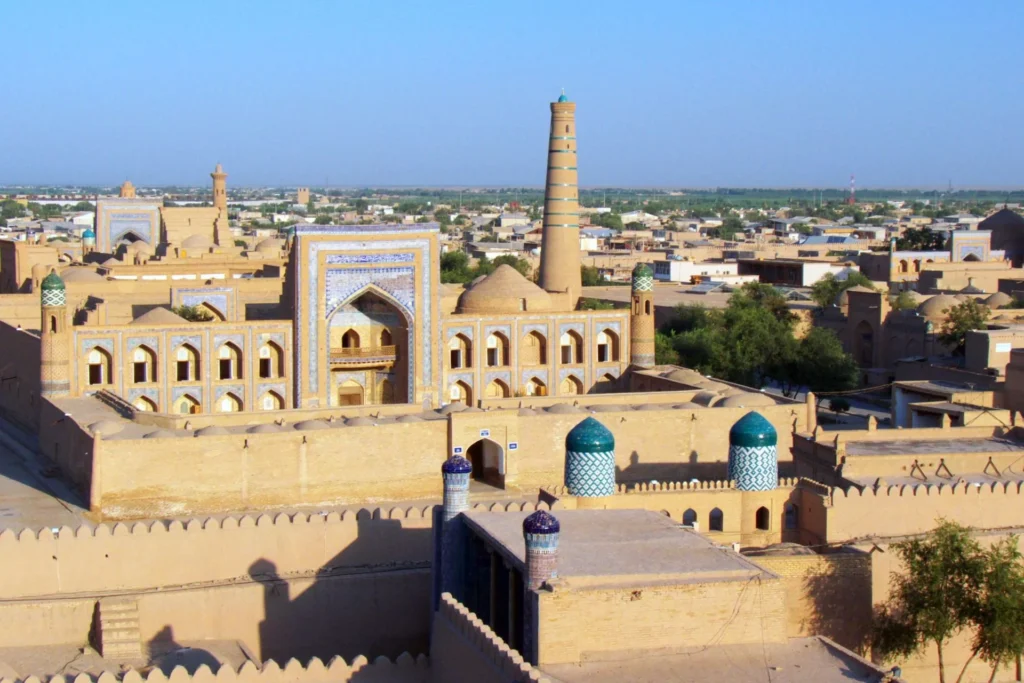
Embarking on a Khiva Ancient City Tour is like stepping into a time capsule of Central Asia’s medieval past. Khiva, a UNESCO World Heritage site, is a remarkably well-preserved ancient city that transports visitors to a bygone era of caravan routes, desert oases, and vibrant trade. The tour unveils Khiva’s architectural wonders, with its imposing city walls, intricately decorated mosques, and majestic minarets that stand as testament to the city’s historical significance. As travelers wander through the narrow lanes of the Ichan Kala, Khiva’s inner fortress, they encounter treasures like the Mohammed Amin Khan Madrasa, adorned with blue tiles and delicate arabesques, and the towering Islam Khoja Minaret, offering panoramic views of the city. The ancient city tour also includes visits to the Tash Hauli Palace, with its ornate courtyards and mosaic-covered walls, and the Kalta Minor Minaret, a testament to unfinished ambition and architectural intrigue. Khiva’s ancient city tour is not just a visual feast but a journey through centuries of culture, craftsmanship, and heritage that have shaped this enchanting corner of Uzbekistan.
Overview of Khiva as a well-preserved medieval city:
Khiva stands as a testament to the splendor of medieval Central Asia, a city frozen in time amidst the shifting sands of the desert. Its well-preserved architecture and layout offer a rare glimpse into the days when Khiva was a bustling hub of trade and culture along the Silk Road. Enclosed within its ancient walls, Khiva’s labyrinthine streets, adorned with intricately decorated buildings and towering minarets, evoke a sense of awe and wonder at the ingenuity and craftsmanship of its past inhabitants. The city’s status as a UNESCO World Heritage site further underscores its importance as a living museum of medieval history and architecture.
Key sites including ancient walls, mosques, and madrasas:
- Ancient Walls: The formidable walls of Khiva, punctuated by imposing gates and watchtowers, offer a striking first impression of the city’s defensive architecture. These walls, dating back centuries, served as a protective barrier against invaders and are a testament to Khiva’s strategic significance in the region.
- Mosques: Khiva boasts a wealth of historic mosques, each showcasing unique architectural styles and decorative elements. The Juma Mosque, with its forest of intricately carved wooden columns, is a marvel of Islamic craftsmanship. The Pahlavon Mahmud Mausoleum, with its turquoise domes and mosaic tiles, is a testament to the city’s religious and cultural heritage.
- Madrasas: Khiva’s madrasas, or religious schools, are architectural wonders adorned with vibrant tile work, ornate facades, and tranquil courtyards. The Mohammed Amin Khan Madrasa, with its azure tiles and intricate patterns, stands as a testament to the city’s commitment to education and scholarship during medieval times.
Exploring these key sites in Khiva offers a journey through the pages of history, where the echoes of traders, scholars, and artisans reverberate through its narrow streets and ancient monuments, preserving the legacy of a bygone era for generations to come.
Tashkent Historical Walk
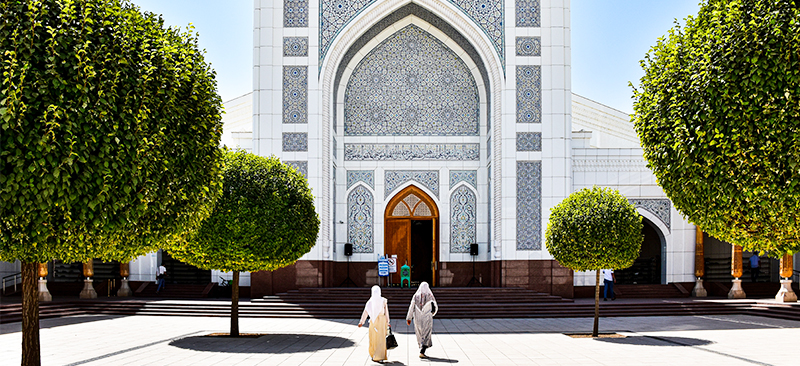
Embarking on a Tashkent Historical Walk is a captivating journey through the capital city’s rich tapestry of history, culture, and modernity. Tashkent, Uzbekistan’s vibrant metropolis, seamlessly blends ancient landmarks with contemporary urban life, offering a unique perspective on the country’s evolution. The historical walk begins with a visit to the Khast-Imam Complex, home to the revered Quran of Caliph Uthman, a symbol of spiritual heritage. As the walk continues, visitors encounter Independence Square, a monumental plaza adorned with fountains, statues, and the grandiose Senate building, representing Uzbekistan’s journey towards independence and sovereignty.
The State Museum of History of Uzbekistan provides a comprehensive overview of the region’s past, showcasing artifacts and exhibits that highlight its cultural diversity and historical milestones. Along the walk, modern architectural marvels like the Tashkent TV Tower and the Amir Timur Museum offer insights into Uzbekistan’s contemporary identity and aspirations.
The Tashkent Historical Walk is not just a sightseeing tour but a holistic exploration of the city’s past, present, and future, where ancient traditions coexist with modern innovations, creating a dynamic and multifaceted urban experience.
Introduction to Tashkent’s historical significance:
Tashkent, the capital of Uzbekistan, holds immense historical significance as one of the oldest cities in Central Asia. Its strategic location along the Silk Road facilitated trade and cultural exchange, shaping its diverse heritage. Over the centuries, Tashkent evolved into a center of learning, commerce, and governance, attracting scholars, merchants, and rulers from across the region. The city’s history is marked by periods of prosperity, conquests, and cultural renaissances, leaving behind a legacy of architectural marvels, ancient monuments, and a rich tapestry of traditions that reflect its storied past.
Visit to Khast-Imam Complex, Independence Square, State Museum of History:
- Khast-Imam Complex: The historical walk begins with a visit to the Khast-Imam Complex, a spiritual center and repository of Islamic heritage. Here, visitors can marvel at the ancient manuscripts, including the renowned Quran of Caliph Uthman, housed in the Tillya Sheikh Mosque. The complex also features the Barak-Khan Madrasa and the Kaffal Shashi Mausoleum, showcasing exquisite Islamic architecture and craftsmanship.
- Independence Square: Moving on, the tour explores Independence Square, a monumental plaza that embodies Uzbekistan’s journey towards independence and sovereignty. The square is adorned with grand statues, fountains, and the imposing Senate building, symbolizing the country’s resilience and aspirations for a prosperous future.
- State Museum of History of Uzbekistan: The historical walk culminates with a visit to the State Museum of History of Uzbekistan, a treasure trove of artifacts, relics, and exhibits that narrate the country’s fascinating past. From ancient civilizations to medieval empires and modern developments, the museum provides a comprehensive overview of Uzbekistan’s cultural heritage, archaeological discoveries, and socio-political evolution.
Exploring these historical sites in Tashkent offers a profound insight into the city’s rich history, cultural diversity, and enduring legacy, making it a captivating destination for history enthusiasts and travelers seeking to unravel the mysteries of Central Asia’s past.
Shakhrisabz Cultural Tour
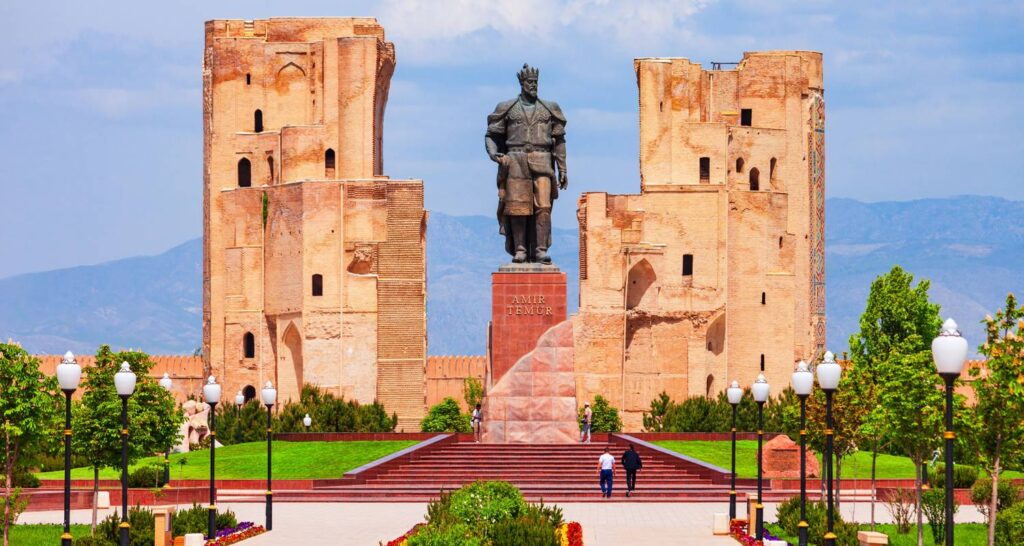
Embarking on a Shakhrisabz Cultural Tour unveils a hidden gem nestled in the Uzbek countryside, offering a journey through centuries of history, art, and architectural splendor. Shakhrisabz, known as the birthplace of the legendary conqueror Tamerlane, is a city steeped in cultural richness and historical significance. The tour begins with a visit to the majestic Ak-Saray Palace, a monumental complex that once stood as a testament to Tamerlane’s grandeur and ambition. Despite its incomplete state, the palace’s colossal arches, intricate tile work, and remnants of blue domes offer a glimpse into its former glory.
Continuing the cultural odyssey, travelers explore the Dorut Tilavat Complex, a revered site housing Tamerlane’s family mausoleum and a peaceful garden sanctuary. The complex’s blend of Islamic and Persian architectural styles, adorned with ornate carvings and geometric patterns, reflects the artistic finesse of the Timurid era. Nearby, the Kok Gumbaz Mosque captivates with its massive turquoise dome and elegant minarets, standing as a symbol of spiritual devotion and architectural elegance.
A Shakhrisabz Cultural Tour is not just a visual feast of historical landmarks but a deeper immersion into Uzbekistan’s cultural heritage and the legacy of Tamerlane’s empire. It offers a profound appreciation for the city’s artistic legacy, spiritual traditions, and contributions to the region’s cultural mosaic, making it a must-visit destination for those seeking to unravel the layers of Central Asia’s captivating past.
Discovery of Shakhrisabz’s cultural and historical sites:
Shakhrisabz, a city steeped in history and culture, invites visitors on a captivating journey of discovery through its ancient streets and architectural marvels. Nestled in the foothills of Uzbekistan’s mountainous landscapes, Shakhrisabz unveils a treasure trove of cultural and historical sites that bear witness to its illustrious past as the birthplace of the great conqueror Tamerlane. Exploring Shakhrisabz is akin to unraveling the layers of a historical tapestry, where each site narrates stories of empires, artistic brilliance, and spiritual devotion that have shaped the city’s identity over the centuries.
Notable landmarks like Ak-Saray Palace, Dorut Tilavat Complex, Kok Gumbaz Mosque:
- Ak-Saray Palace: The tour begins with a visit to the imposing Ak-Saray Palace, a monumental complex commissioned by Tamerlane to showcase his power and grandeur. Although partially unfinished, the palace’s massive entrance gate, towering arches, and remnants of intricate tile work offer a glimpse into its former magnificence, reflecting the architectural finesse of the Timurid dynasty.
- Dorut Tilavat Complex: Continuing the journey, travelers encounter the serene Dorut Tilavat Complex, a sacred site that houses Tamerlane’s family mausoleum and a tranquil garden courtyard. The complex’s blend of Islamic and Persian architectural styles, adorned with intricate carvings and colorful tiles, creates a peaceful ambiance conducive to reflection and spiritual contemplation.
- Kok Gumbaz Mosque: The tour culminates with a visit to the Kok Gumbaz Mosque, renowned for its massive turquoise dome and elegant minarets that dominate Shakhrisabz’s skyline. The mosque’s architectural elegance, combined with its historical significance as a place of worship, makes it a notable landmark symbolizing the city’s cultural and religious heritage.
Exploring these cultural and historical landmarks in Shakhrisabz offers a deeper appreciation for Uzbekistan’s rich heritage, architectural legacy, and the enduring legacy of Tamerlane’s empire, making it a memorable and enlightening experience for history enthusiasts and cultural explorers alike.
Fergana Valley Tour
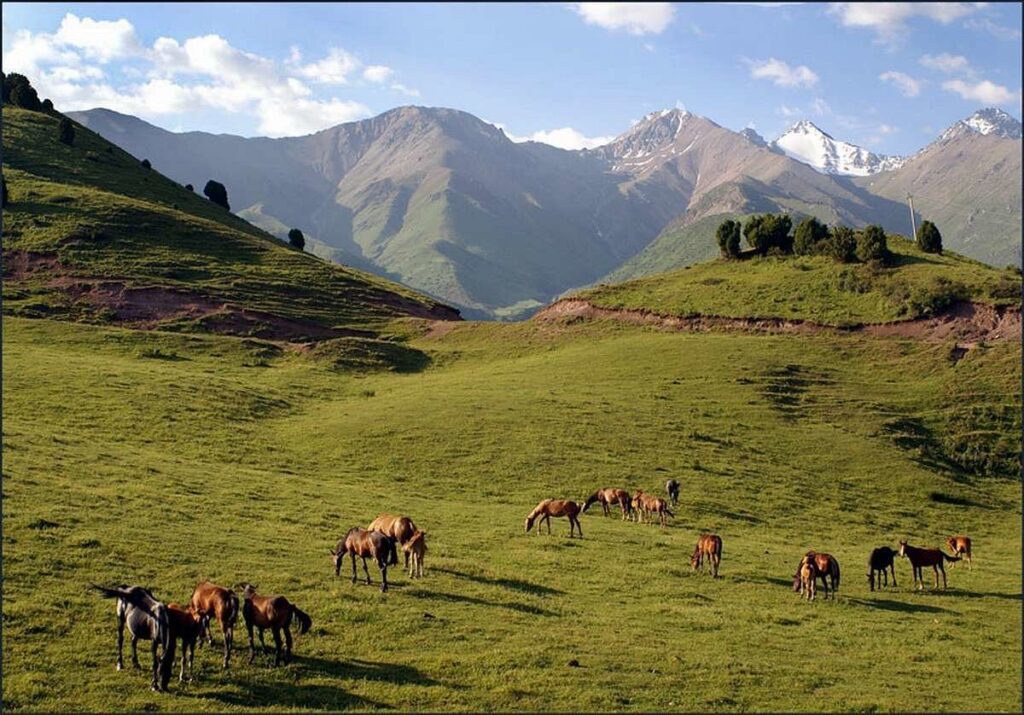
Embarking on a Fergana Valley Tour unveils a captivating landscape steeped in history, culture, and natural beauty. The Fergana Valley, nestled between the Tian Shan and Pamir-Alai mountain ranges, is a fertile region known for its lush orchards, vibrant bazaars, and rich cultural heritage. The tour offers a multifaceted exploration of the valley’s diverse attractions, from traditional crafts and agricultural practices to ancient monuments and picturesque landscapes.
One of the highlights of the Fergana Valley Tour is the discovery of Rishtan pottery, renowned for its intricate designs and vibrant colors. Visitors can witness skilled artisans at work, shaping clay into exquisite ceramics using traditional techniques passed down through generations. The Margilan silk production is another cultural gem, where silk weavers showcase the artistry of ikat weaving, creating intricate patterns and designs on luxurious silk fabrics.
Exploring the valley’s historical sites is a journey through time, with visits to Kokand’s Khudoyar Khan Palace, a splendid example of Central Asian architecture adorned with intricate woodwork and colorful tiles. The Jami Mosque and the Norbut-Biy Madrasa showcase the region’s Islamic heritage and architectural prowess, offering insights into the spiritual and scholarly aspects of Fergana’s history.
The tour also includes opportunities to immerse in the valley’s natural beauty, with visits to scenic spots like the Kamchik Pass and the Chatkal Mountains. The idyllic landscapes, dotted with orchards, rivers, and meadows, provide a serene backdrop for outdoor activities and leisurely exploration.
A Fergana Valley Tour is not just a journey through a picturesque landscape but a cultural odyssey that celebrates the region’s traditions, craftsmanship, and historical legacy. It offers a deeper understanding of Uzbekistan’s diverse cultural tapestry and the unique charm of the Fergana Valley as a hidden gem waiting to be discovered.
Exploration of Fergana Valley’s cultural heritage:
The Fergana Valley, renowned for its vibrant cultural heritage, invites travelers on an immersive exploration of traditions, craftsmanship, and historical legacies. The valley’s cultural tapestry is woven with threads of ancient customs, artistic endeavors, and religious influences, making it a captivating destination for cultural enthusiasts. Exploring the Fergana Valley’s cultural heritage unveils a treasure trove of experiences that highlight the region’s unique identity and contributions to Uzbekistan’s rich heritage.
Activities such as Rishtan pottery, Margilan silk production, visits to historical sites:
- Rishtan Pottery: A visit to Rishtan, famous for its distinctive pottery, allows travelers to witness firsthand the intricate artistry and craftsmanship involved in creating traditional ceramics. Skilled artisans, using techniques passed down through generations, shape clay into exquisite pottery adorned with intricate patterns and vibrant colors, showcasing the region’s artistic legacy.
- Margilan Silk Production: Margilan, known as the silk capital of Uzbekistan, offers a glimpse into the age-old art of silk weaving. Visitors can explore silk workshops and witness the intricate process of ikat weaving, where artisans dye silk threads before weaving them into stunning fabrics with mesmerizing patterns and designs. The Margilan silk production is a testament to the valley’s expertise in textile craftsmanship.
- Visits to Historical Sites: The Fergana Valley tour includes visits to historical sites that reflect the region’s cultural and religious heritage. Kokand’s Khudoyar Khan Palace, adorned with intricate woodcarvings and colorful tiles, showcases the architectural brilliance of Central Asia. The Jami Mosque and Norbut-Biy Madrasa provide insights into the Islamic traditions and scholarly pursuits that shaped the valley’s history.
These activities offer a holistic immersion into the Fergana Valley’s cultural heritage, allowing travelers to appreciate its artistic achievements, traditional craftsmanship, and historical significance. The exploration of cultural sites and engaging in hands-on experiences like pottery and silk production provide a deeper understanding of the valley’s unique cultural identity and its enduring contributions to Uzbekistan’s diverse heritage.
Nukus and Savitsky Museum Tour
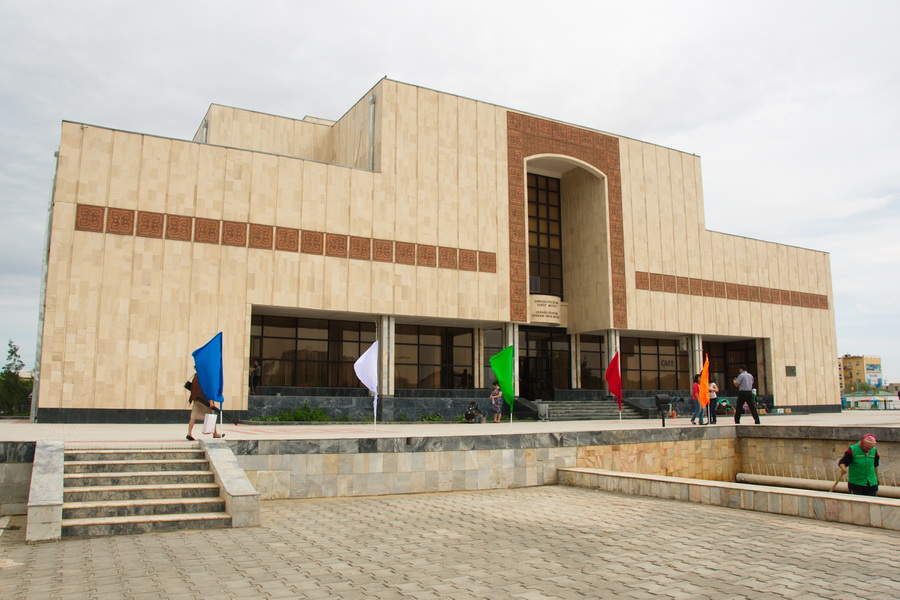
Embarking on a Nukus and Savitsky Museum Tour offers a fascinating glimpse into the art, history, and cultural heritage of Karakalpakstan, an autonomous region in Uzbekistan. At the heart of this tour lies the Savitsky Museum, also known as the Karakalpakstan State Art Museum named after Igor Savitsky. This museum houses a remarkable collection of Soviet avant-garde art, including paintings, sculptures, and artifacts that were once suppressed during the Soviet era but now stand as a testament to artistic freedom and expression.
The tour begins with a visit to Nukus, the capital city of Karakalpakstan, where travelers can explore the unique blend of modernity and tradition. The Savitsky Museum itself is a cultural treasure trove, showcasing the works of artists who defied the norms of socialist realism and experimented with innovative artistic styles. Visitors can admire masterpieces by renowned artists like Nikolai Karakhan, Alexander Volkov, and Robert Falk, whose works offer insights into the turbulent yet creative period of Soviet art history.
Apart from the museum, the tour includes visits to historical sites in Nukus, such as the Jumabazar Kala fortress and the Nukus Regional History Museum, which provides a glimpse into the region’s archaeological and ethnographic heritage. Additionally, travelers can explore the local bazaars, interact with Karakalpak artisans, and experience the unique culture and traditions of this lesser-known region of Uzbekistan.
A Nukus and Savitsky Museum Tour is not just an art excursion but a cultural journey that sheds light on the resilience of artists, the preservation of cultural heritage, and the complexities of Soviet history. It offers a deeper understanding of Karakalpakstan’s artistic legacy and its contributions to Uzbekistan’s diverse cultural landscape.
Introduction to Nukus and its unique art museum:
Nukus, the capital city of Karakalpakstan in Uzbekistan, is home to a hidden gem of the art world — the Savitsky Museum, officially known as the Karakalpakstan State Art Museum named after Igor Savitsky. This museum is renowned for its unparalleled collection of Soviet avant-garde art, which includes works that were once deemed controversial and suppressed during the Soviet era. Igor Savitsky, a visionary collector and curator, played a pivotal role in preserving these artworks, defying censorship and championing artistic freedom. The museum itself is a cultural oasis, offering a window into the vibrant creativity and artistic diversity of the Soviet period that often went unrecognized or underappreciated.
Highlights of the Savitsky Museum’s Soviet avant-garde art collection:
The Savitsky Museum’s Soviet avant-garde art collection is a treasure trove of artistic innovation and cultural heritage. It encompasses a wide range of styles, themes, and mediums, reflecting the dynamic and tumultuous era of Soviet art. Some of the highlights of the museum’s collection include:
- Works by Nikolai Karakhan: Karakhan was a pioneering artist known for his bold use of color and abstract forms. His paintings, often depicting scenes from everyday life infused with symbolism, showcase his unique artistic vision and experimentation.
- Alexander Volkov’s Landscapes: Volkov’s landscapes are characterized by their ethereal beauty and emotional depth. His use of light, shadow, and perspective creates immersive scenes that transport viewers to serene natural settings or bustling urban environments.
- Robert Falk’s Portraits: Falk’s portraits are masterpieces of psychological insight and artistic skill. His ability to capture the nuances of human expression and emotion through subtle brushwork and composition makes his portraits compelling and thought-provoking.
- Experimental Sculptures and Installations: The museum also features avant-garde sculptures and installations that push the boundaries of traditional art forms. These works challenge conventions and invite viewers to engage with art in new and innovative ways.
Overall, the Savitsky Museum’s Soviet avant-garde art collection is a testament to the power of art to transcend political ideologies and cultural barriers. It serves as a reminder of the resilience and creativity of artists during challenging times and offers a captivating journey through the complexities of Soviet art history.
Termez Archaeological Tour
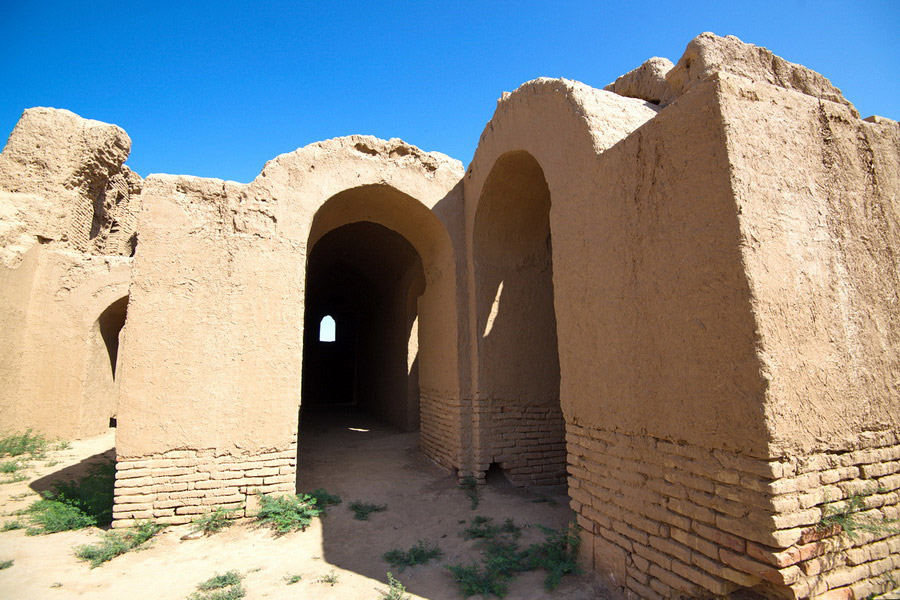
Embarking on a Termez Archaeological Tour is like stepping into a time machine that transports travelers back through millennia of history. Termez, located in southern Uzbekistan near the Afghan border, is a city with a rich archaeological heritage that dates back thousands of years. The tour offers a fascinating exploration of ancient civilizations, Buddhist influences, and Silk Road trade routes that have shaped Termez into a cultural crossroads.
The tour begins with a visit to Fayaz Tepe, an ancient Buddhist site dating back to the 2nd century BCE. Here, visitors can marvel at the remnants of stupas, monasteries, and intricate Buddhist sculptures, providing insights into the region’s religious past and the spread of Buddhism along the Silk Road. The Zurmala Stupa, with its impressive size and architectural details, is another highlight of the archaeological tour, offering a glimpse into the spiritual practices of ancient Termez.
The Sultan Saodat Ensemble, a complex of mausoleums and mosques dating back to the 10th century, showcases the Islamic heritage of Termez and its importance as a center of Sufi mysticism. The intricate tile work, geometric patterns, and serene courtyards of the ensemble create a tranquil ambiance that transports visitors to a bygone era of spiritual devotion and cultural flourishing.
The Termez Archaeological Tour also includes visits to historical sites like the Al Hakim At-Termizi Mausoleum, honoring the renowned Islamic scholar Al Hakim At-Termizi, and the Kyrk-Kyz Fortress, a relic of ancient fortifications that once guarded the city. Each site on the tour offers a piece of Termez’s complex and multifaceted history, inviting travelers to unravel the layers of civilizations that have left their mark on this ancient city along the banks of the Amu Darya River.
Overview of Termez’s archaeological significance:
Termez, situated in the southern region of Uzbekistan, holds immense archaeological significance as a crossroads of ancient civilizations and cultures. Its strategic location along the Amu Darya River made it a hub for trade, religious exchange, and cultural diffusion along the Silk Road. Termez’s archaeological sites bear witness to its rich history spanning over two millennia, encompassing influences from Greek, Buddhist, Islamic, and Persian civilizations. The city’s archaeological treasures provide valuable insights into the evolution of human settlement, religious beliefs, and artistic expressions in Central Asia.
Visits to Buddhist sites like Fayaz Tepe, Zurmala Stupa, Sultan Saodat Ensemble:
- Fayaz Tepe: The Termez Archaeological Tour begins with a visit to Fayaz Tepe, an ancient Buddhist site dating back to the Kushan period (2nd century BCE). This site reveals the remnants of Buddhist stupas, monastic complexes, and sculptures, reflecting Termez’s role as a center of Buddhist learning and pilgrimage along the Silk Road.
- Zurmala Stupa: Another highlight of the tour is the Zurmala Stupa, a monumental structure that served as a focal point for Buddhist worship and rituals. The stupa’s impressive size, architectural details, and decorative elements provide insights into the religious practices and artistic achievements of ancient Termez.
- Sultan Saodat Ensemble: The tour also includes a visit to the Sultan Saodat Ensemble, a complex of mausoleums and mosques dating back to the 10th century. This ensemble honors the Saodat dynasty and serves as a testament to Termez’s Islamic heritage and its significance as a center of Sufi mysticism. The intricate tile work, geometric patterns, and tranquil courtyards of the ensemble create a serene ambiance that transports visitors to a bygone era of spiritual devotion and cultural flourishing.
Exploring these Buddhist sites in Termez offers a unique perspective on the city’s diverse cultural heritage, from its ancient Buddhist roots to its later Islamic influences. The archaeological tour allows travelers to delve into the layers of history that have shaped Termez into a captivating destination for those interested in Central Asia’s rich past and cultural legacy.
Archeological Sites Tour
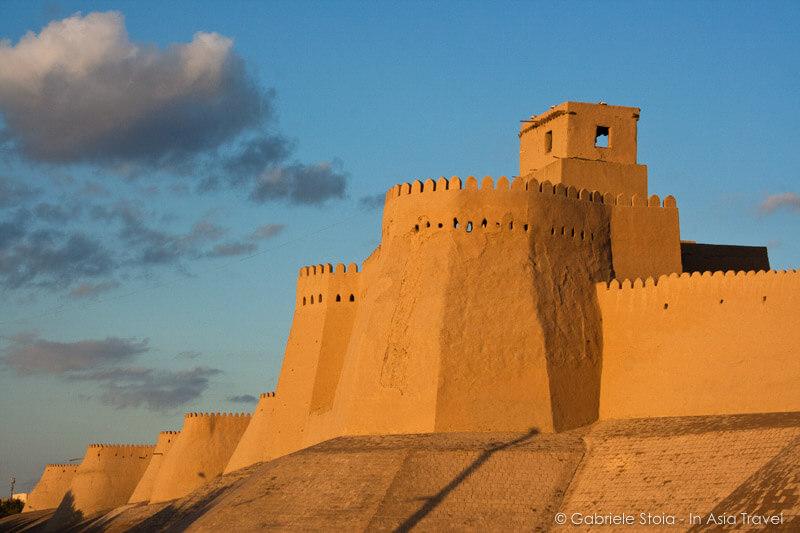
Embarking on an Archaeological Sites Tour is an immersive journey through the annals of human history, where ancient civilizations and their remarkable legacies come to life. This tour is a testament to mankind’s ingenuity, cultural richness, and enduring quest for knowledge, as evidenced by the archaeological treasures scattered across diverse landscapes. From the majestic pyramids of Egypt and the iconic ruins of Machu Picchu to the ancient city of Petra and the awe-inspiring Stonehenge, each site tells a unique story of human achievement, innovation, and resilience.
The Archaeological Sites Tour offers travelers the opportunity to explore these wonders firsthand, marveling at the architectural marvels, deciphering ancient inscriptions, and unraveling the mysteries of bygone civilizations. Whether it’s walking in the footsteps of pharaohs in the Valley of the Kings, admiring the precision of Inca stone masonry in the Andes, or pondering the purpose of megalithic monuments in England, every site on this tour is a testament to the enduring legacy of our ancestors and the timeless allure of archaeology.
As travelers traverse continents and epochs, they gain a deeper appreciation for the interconnectedness of human history and the diverse cultures that have shaped our world. The Archaeological Sites Tour is not just a journey through time but an invitation to explore the shared heritage of humanity, fostering a sense of wonder, curiosity, and appreciation for the wonders of the ancient world.
Exploration of various archaeological sites in Uzbekistan:
Embarking on an archaeological exploration in Uzbekistan unveils a treasure trove of ancient civilizations, where the sands of time whisper tales of bygone eras and cultural splendor. The country’s rich archaeological heritage is a testament to its pivotal role as a crossroads of civilizations along the historic Silk Road. From the legendary city of Afrasiyab near Samarkand to the rugged Ayaz-Kala fortress and the enigmatic ancient Khorezm sites, Uzbekistan’s archaeological sites offer a captivating journey through millennia of human history, art, and cultural exchange.
Examples include Afrasiyab near Samarkand, Ayaz-Kala fortress, ancient Khorezm sites:
- Afrasiyab near Samarkand: The ancient city of Afrasiyab, situated near Samarkand, is a treasure trove of archaeological wonders dating back to the 7th century BCE. Excavations have revealed ancient fortifications, palaces, and artifacts that showcase the city’s importance as a cultural and political center along the Silk Road.
- Ayaz-Kala fortress: Perched atop a desert plateau in Karakalpakstan, the Ayaz-Kala fortress is a stunning example of ancient fortification architecture. Dating back to the 4th century BCE, this fortress complex comprises several layers of defensive walls and structures, offering panoramic views of the surrounding desert landscape.
- Ancient Khorezm sites: The ancient Khorezm region, located in present-day western Uzbekistan, is home to a cluster of archaeological sites that reflect the region’s rich history and cultural heritage. These sites include ancient cities like Toprak-Kala, Ayaz-Kala, and Khiva, each showcasing unique architectural styles, artistic traditions, and technological advancements of ancient civilizations that once thrived in this arid region.
Exploring these archaeological sites in Uzbekistan is a journey of discovery, where travelers can witness the remnants of ancient civilizations, decipher historical mysteries, and appreciate the enduring legacy of human ingenuity and cultural exchange in Central Asia.
Silk Road Expedition
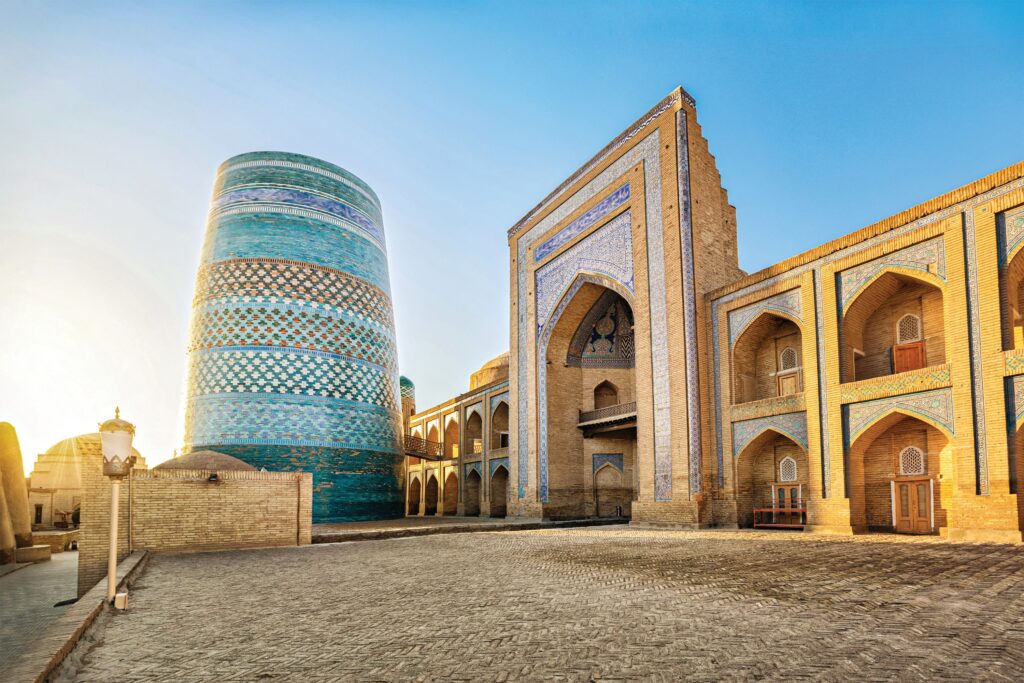
Embarking on a Silk Road Expedition is a voyage through time and culture, retracing the ancient trade routes that connected civilizations across Asia and Europe. The Silk Road, a network of interconnected pathways, was not merely a route for commerce but also a conduit for the exchange of ideas, religions, technologies, and art forms. This expedition offers travelers a glimpse into the historical tapestry of the Silk Road, with its diverse landscapes, vibrant bazaars, and ancient cities steeped in history.
The journey begins in Xi’an, China, where the renowned Terracotta Warriors stand as guardians of a bygone empire. From there, the expedition winds through the deserts of Central Asia, crossing rugged terrain and nomadic lands. Stops along the way include the bustling markets of Kashgar, the ancient city of Bukhara with its majestic madrasas and caravanserais, and the legendary oasis of Samarkand, adorned with blue-domed mosques and mausoleums.
As the expedition progresses westward, travelers encounter the majestic landscapes of the Pamir Mountains and the cultural melting pot of Bukhara, where traders from East and West converged to exchange goods and ideas. The journey culminates in Istanbul, Turkey, where the treasures of the Silk Road found their way into the markets of Europe, marking the end of an era of cross-cultural exchange and economic prosperity.
The Silk Road Expedition is not just a physical journey but a cultural odyssey that traverses centuries of history, showcasing the resilience, creativity, and interconnectedness of human civilizations. It invites travelers to immerse themselves in the sights, sounds, and stories of a legendary trade route that shaped the course of world history and left an indelible mark on the cultural heritage of Eurasia.
Comprehensive journey along Uzbekistan’s Silk Road route
Embarking on a comprehensive journey along Uzbekistan’s Silk Road route offers an immersive exploration of the region’s rich history, cultural diversity, and architectural wonders. Uzbekistan, known as the heart of the ancient Silk Road, boasts a wealth of archaeological sites, bustling bazaars, and majestic cities that once flourished as vibrant trading hubs. This journey is a tapestry woven with threads of ancient civilizations, where each stop unveils a chapter of Central Asia’s illustrious past and enduring legacy.
The journey begins in Tashkent, Uzbekistan’s modern capital, where travelers can visit the bustling Chorsu Bazaar, a lively marketplace that echoes the vibrant trade spirit of the Silk Road era. From Tashkent, the route leads to Samarkand, a city steeped in history and architectural marvels. Here, the iconic Registan Square, with its magnificent madrasas and grandeur, stands as a testament to the city’s former glory as a center of Islamic art and scholarship.
Continuing the journey, travelers venture to Bukhara, a UNESCO World Heritage city adorned with ancient mosques, mausoleums, and bustling bazars. The Ark of Bukhara, Poi Kalon Complex, and the vibrant Lyabi-Hauz Ensemble are among the highlights that showcase Bukhara’s cultural richness and architectural splendor.
Further along the Silk Road route lies Khiva, a living museum of medieval Central Asian architecture. The walled city of Khiva, with its narrow alleys, towering minarets, and well-preserved madrasas, transports visitors back in time to the days of caravans and traders.
The journey through Uzbekistan’s Silk Road route also includes visits to lesser-known gems like Nukus, with its Savitsky Museum housing Soviet avant-garde art, and Termez, renowned for its Buddhist and Islamic archaeological sites.
This comprehensive journey along Uzbekistan’s Silk Road route is not just a sightseeing expedition but a cultural odyssey that offers a deeper understanding of the region’s historical significance, artistic achievements, and cultural heritage. It invites travelers to connect with the past, experience the present, and envision the future of this legendary trade route that bridged continents and civilizations.
Conclusion
Embarking on historical tours in Uzbekistan is a captivating journey through the annals of time, where centuries of culture, heritage, and innovation converge to create a tapestry of unparalleled beauty and significance. From the majestic cities of Samarkand, Bukhara, and Khiva, adorned with architectural wonders from ancient empires, to the hidden gems of Nukus and Termez, steeped in artistic and archaeological treasures, Uzbekistan offers a wealth of experiences for history enthusiasts and cultural explorers alike.
Each historical Tours in Uzbekistan unveils a unique chapter of the country’s rich past, from the vibrant Silk Road trade routes to the remnants of ancient civilizations and the enduring legacies of Islamic scholars and craftsmen. The exploration of iconic sites like Registan Square, Ak-Saray Palace, and the Savitsky Museum provides a deeper appreciation for the country’s cultural diversity, artistic achievements, and historical significance on the world stage.
As travelers wander through bustling bazaars, intricate mosques, and ancient fortresses, they not only witness the grandeur of Uzbekistan’s heritage but also engage with its vibrant present and promising future. The warmth of Uzbek hospitality, the flavors of traditional cuisine, and the rhythm of local music and dance add layers of authenticity to the historical tours, creating lasting memories and connections with this enchanting land.
In conclusion, historical tours in Uzbekistan offer a transformative experience, where the past meets the present in a harmonious blend of tradition and modernity. Whether exploring ancient ruins, admiring masterpieces of Islamic art, or immersing in the cultural tapestry of Central Asia, Uzbekistan’s historical tours leave an indelible mark on the hearts and minds of travelers, inviting them to discover the timeless beauty and enduring spirit of this remarkable country.
Read more Historical Tours in Kazakhstan
